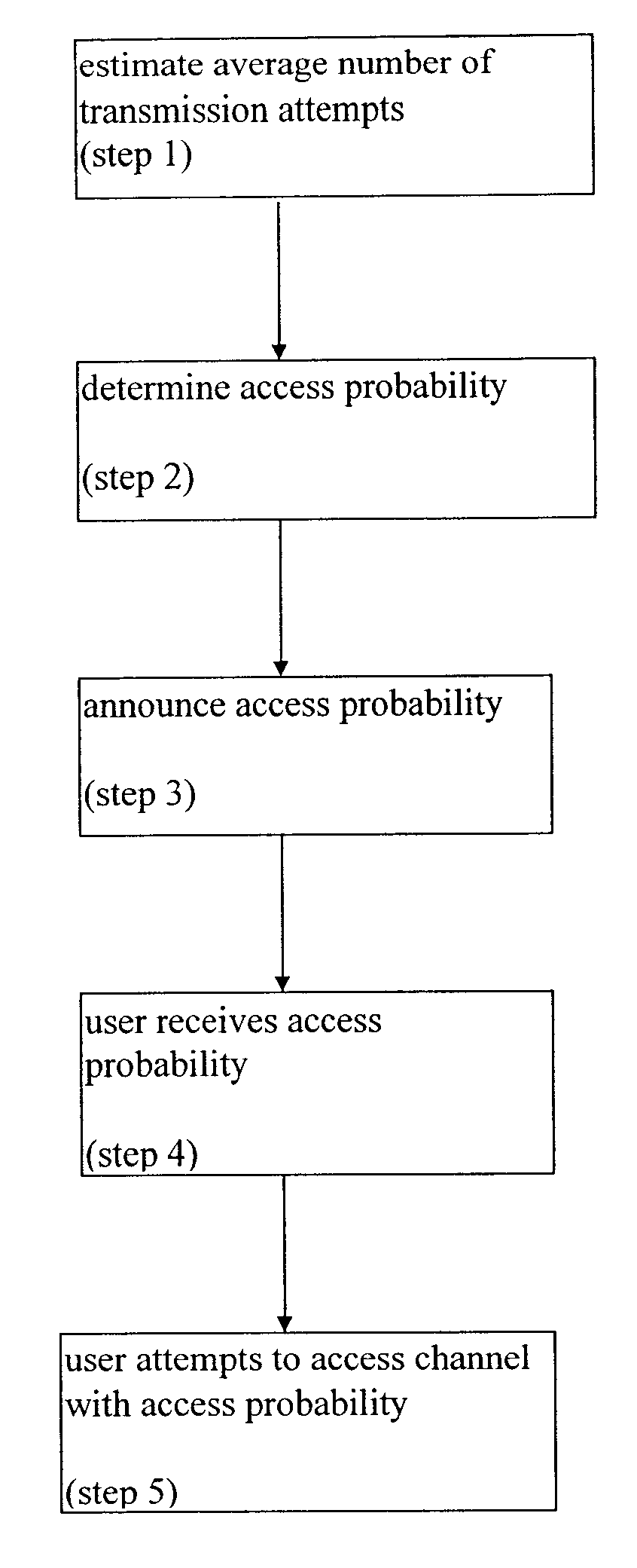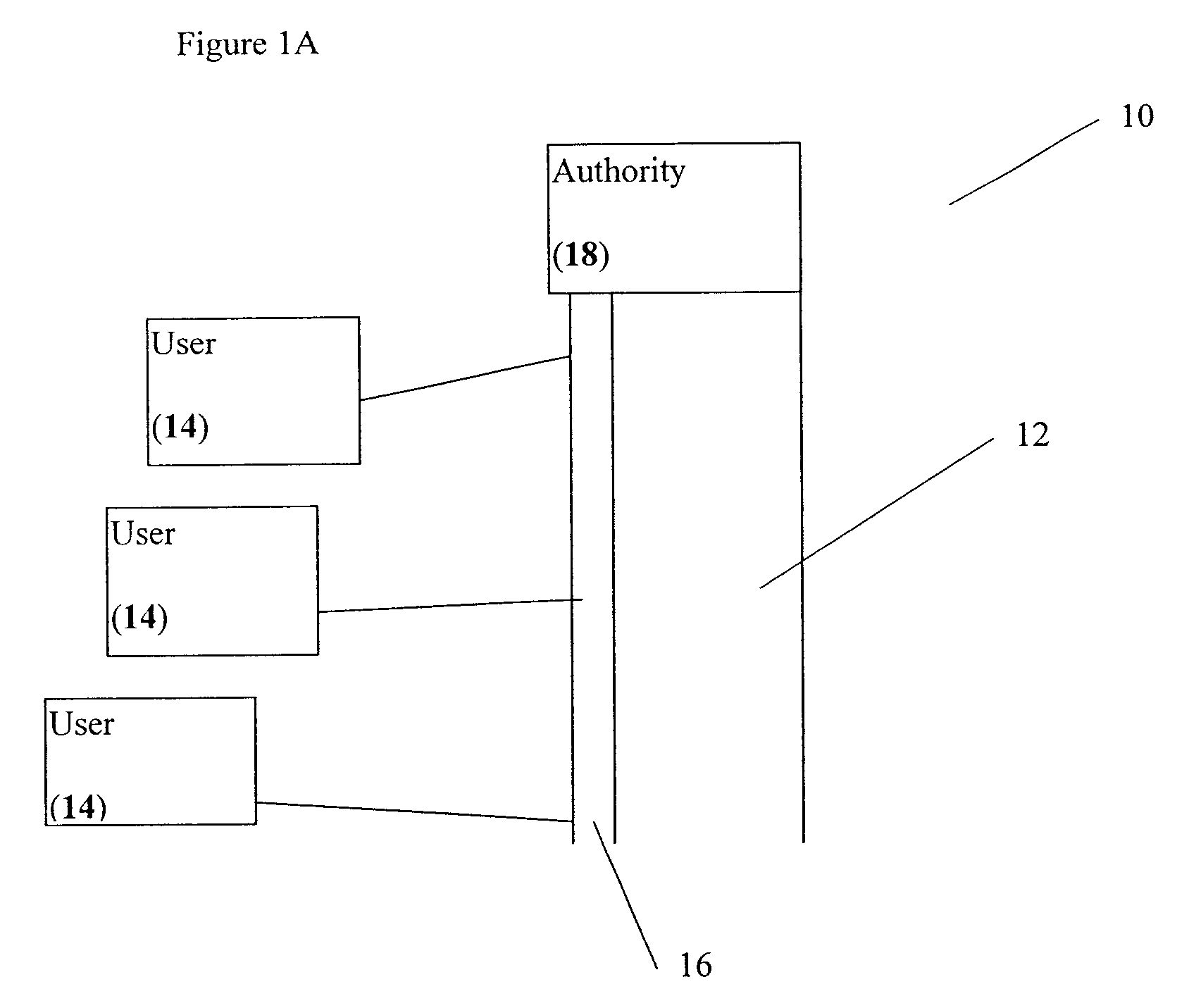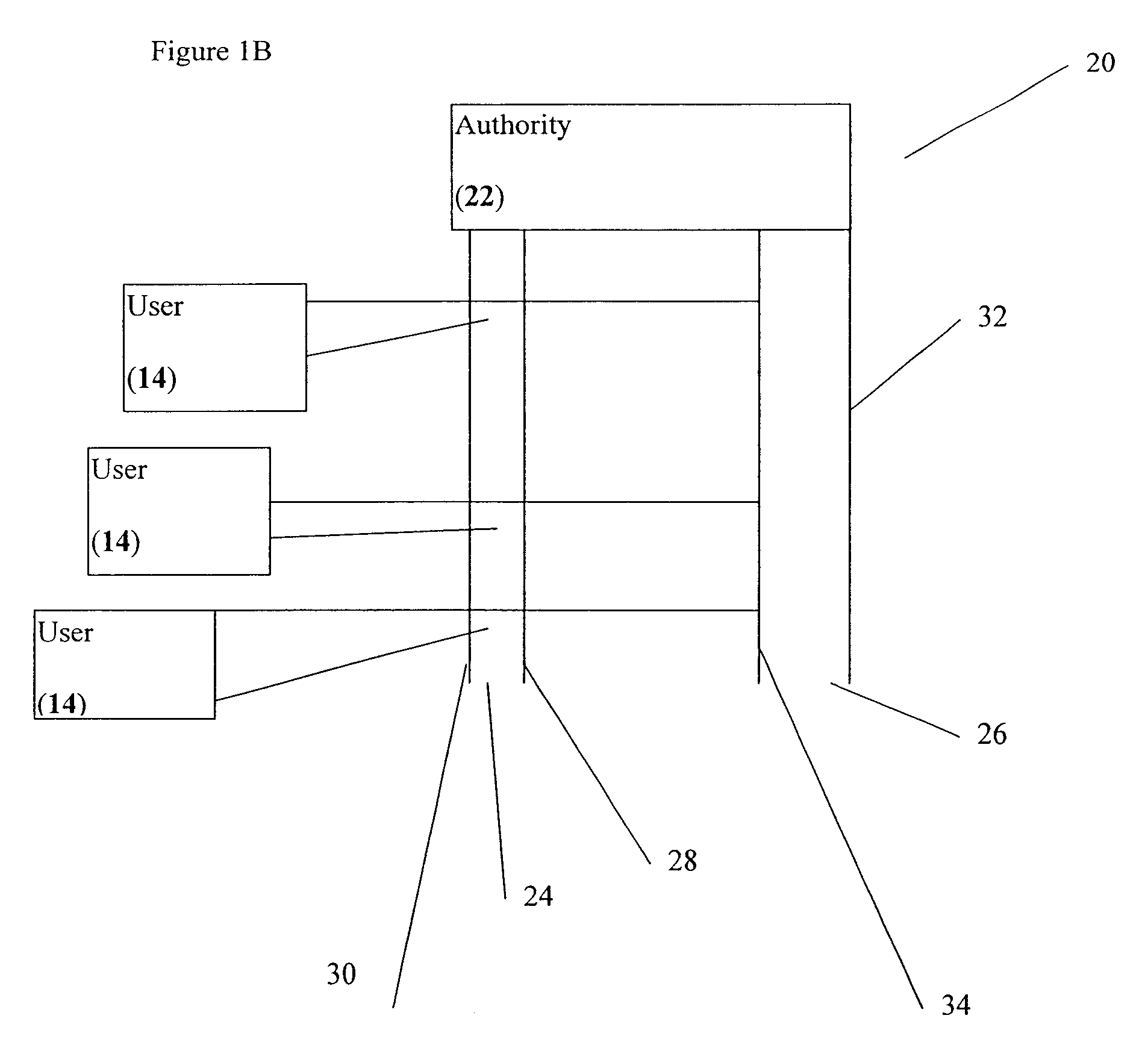Announced dynamic access probability protocol for shared bandwidth networks
a technology of dynamic access probability and shared bandwidth, which is applied in the direction of digital transmission, data switching network, electrical equipment, etc., can solve the problems of unavoidable collisions, inability to collision, and allocation of shared channels
- Summary
- Abstract
- Description
- Claims
- Application Information
AI Technical Summary
Problems solved by technology
Method used
Image
Examples
example 2
Analysis of the Method of the Present Invention for Pure ALOHA
The implementation and analysis of the method of the present invention under the pure ALOHA protocol is very similar to the analysis under the slotted ALOHA protocol, as described in Example 1. The major difference is that the channel utilization, E, is given by Equation 9:
The maximum channel efficiency occurs at R=0.5, with throughput of 0.5e.apprxeq.18%. Similarly to the discrete time case, the value of the access probability, p.sub.new, is given as a function of the load by Equation 10: ##EQU7##
The value of R can be estimated assuming that the probability of no transmission is e.sup.-R, and that the probability of a successful transmission is Re.sup.-2R.
PUM
 Login to View More
Login to View More Abstract
Description
Claims
Application Information
 Login to View More
Login to View More - R&D
- Intellectual Property
- Life Sciences
- Materials
- Tech Scout
- Unparalleled Data Quality
- Higher Quality Content
- 60% Fewer Hallucinations
Browse by: Latest US Patents, China's latest patents, Technical Efficacy Thesaurus, Application Domain, Technology Topic, Popular Technical Reports.
© 2025 PatSnap. All rights reserved.Legal|Privacy policy|Modern Slavery Act Transparency Statement|Sitemap|About US| Contact US: help@patsnap.com



